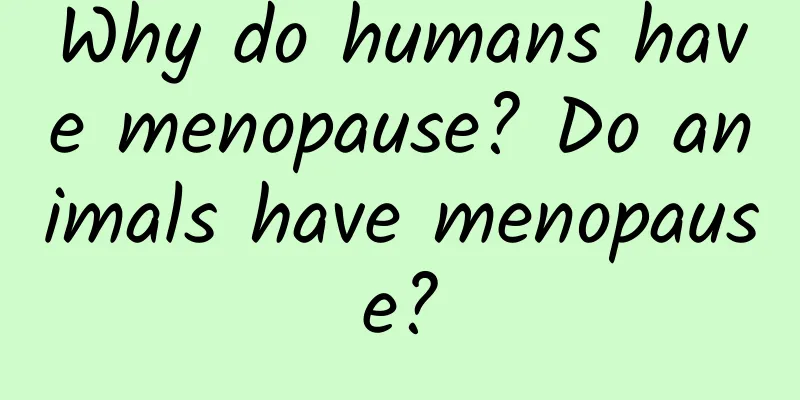Do you always feel suffocated after "two yang"? Therapists remind you: Be alert when these situations occur in your daily life!

|
After the "two yangs", some people felt breathless and began to pant after a little exercise. Not only that, with the frequent high temperatures recently, many people also said that they felt tired after walking for a while and panted after running for a few steps. Everyone wondered: Is there something wrong with my heart and lungs? So is there really something wrong with your cardiopulmonary function? Don't worry, here is a trick to help you make a preliminary assessment of your cardiopulmonary function. Copyright images in the gallery. Reprinting and using them may lead to copyright disputes. 01 A simple trick Identify reduced cardiopulmonary function! If the following situations occur, you should pay attention, as they may be a sign of cardiopulmonary problems: 1. If you have a habit of exercising, but you feel that your exercise ability is not as good as before, such as obvious breathing difficulties, palpitations, lack of physical strength, etc.; 2. When you need to walk uphill, run or climb stairs, you feel shortness of breath and difficulty in breathing, and you are unable to persist. At this time, it is recommended to go to a regular hospital for cardiopulmonary function assessment and examination. The cardiopulmonary physiotherapist will also develop a rehabilitation plan based on your condition. Copyright images in the gallery. Reprinting and using them may lead to copyright disputes. 02 What is "cardiopulmonary physical therapy"? Cardiopulmonary physical therapy belongs to the category of physical therapy. It is an evaluation and treatment system for cardiopulmonary dysfunction that occurs during perioperative period or after acute trauma, as well as chronic cardiopulmonary diseases. Cardiopulmonary physical therapy includes physical therapy evaluation, position management, early mobilization, exercise training, airway clearance therapy, breathing training, manual therapy and physical factor therapy. During medical treatment, many departments will provide cardiopulmonary physical therapy to patients, such as: Intensive care unit: various acute and critically ill patients; Cardiovascular Surgery: valvular heart disease, aortic dissection, heart transplantation, etc. Cardiology: coronary heart disease, heart failure, etc.; Respiratory Medicine: COPD, asthma, pulmonary hypertension, etc.; General thoracic surgery: lung resection (lung nodules, lung cancer), mediastinal tumors, esophageal cancer, lung transplantation, etc.; Internal Medicine: diabetes, hypertension, hyperlipidemia, obesity, etc.; Patients with cardiopulmonary dysfunction or secondary motor dysfunction in hepatobiliary and pancreatic surgery, metabolic and psychiatric diseases, central nervous system injuries, and other departments. Seeing that patients from so many departments have to undergo cardiopulmonary physical therapy, some people may become restless and say: I am just here for surgery, why do I have to do cardiopulmonary rehabilitation? 03 Cardiopulmonary physical therapy What problems can it help us solve? It is normal to have such doubts. Let us explain it in detail using specific scenarios. Scene 1: Surgical ward Patient A: A cardiopulmonary physiotherapist evaluated and treated me before surgery. What was the point? Cardiopulmonary physiotherapist: The purpose of preoperative cardiopulmonary physiotherapy evaluation is to evaluate the cardiopulmonary function of surgical patients before surgery, identify high-risk factors for surgery early, and provide necessary preoperative references to clinicians. Timely preoperative treatment and exercise can not only reduce the risk of postoperative complications in patients after surgery, but also improve the prognosis and health status of patients. In the long run, it can also shorten overall hospital stays, medical costs, and quality of life. Scenario 2: Intensive Care Unit (ICU) Family member of Patient B: My father was admitted to the ICU due to respiratory failure and received rehabilitation treatment there. Are these treatments necessary? Cardiopulmonary physiotherapist: Very necessary. In the intensive care unit, as a member of the multidisciplinary team (MDT) of critical care rehabilitation, cardiopulmonary physiotherapist is responsible for formulating and implementing rehabilitation treatment for critically ill patients, which includes posture management (improving respiratory function and lung ventilation, facilitating sputum drainage, etc.), early activity (avoiding the adverse consequences of long-term bed rest), breathing training (improving respiratory function), airway clearance management (preventing lung infection, atelectasis, etc.), transfer training (restoring basic mobility), muscle strength training (preventing or reducing muscle atrophy), joint mobilization training (preventing joint contracture) and other main contents. These treatments are designed to enable patients to resume limb activities, maintain and improve cardiopulmonary function, and increase respiratory efficiency as soon as possible while ensuring safety, and to assist the multidisciplinary team in weaning patients off ventilators and tube sealing, so as to maximize the physical function and quality of life of patients after leaving the ICU and reduce the disability rate. Copyright images in the gallery. Reprinting and using them may lead to copyright disputes. Scenario 3: Outpatient clinic Patient C: I have diabetes and chronic obstructive pulmonary disease, which causes me to be very inactive and afraid to exercise. I have difficulty breathing when I exercise, so it is very difficult for me to walk now. Will cardiopulmonary physical therapy work for me? Cardiopulmonary physiotherapist: Not only is it useful, but it is also necessary to persist in the long term. Cardiopulmonary physical therapy covers the long-term health management of many common chronic diseases, such as diabetes, chronic obstructive pulmonary disease, coronary heart disease, hypertension, hyperlipidemia, obesity, etc. Copyright images in the gallery. Reprinting and using them may lead to copyright disputes. At present, many international studies have confirmed the additive effects of exercise combined with medication in the treatment of chronic cardiopulmonary diseases. For example, it can better improve blood sugar, blood pressure, as well as problems such as dyspnea and decreased exercise ability in patients with COPD. Moreover, through persistent cardiopulmonary physical therapy, the long-term survival rate and quality of life of patients with chronic cardiopulmonary diseases can also be improved. author: Yu Pengming, Associate Professor, Department of Cardiopulmonary Rehabilitation, Rehabilitation Medicine Center, West China Hospital, Sichuan University Hu Yuekong Cardiopulmonary physiotherapist, Department of Rehabilitation Medicine, West China Tianfu Hospital, Sichuan University Source: West China Hospital WeChat Official Account The cover image and the images in this article are from the copyright library Reprinting may lead to copyright disputes Please reply "repost" to repost the original text and pictures |
>>: The largest dinosaurs in the world are four stories tall. How did they grow into such giants?
Recommend
21 most commonly used growth techniques by foreign growth hackers
After testing and practicing throughout 2017, for...
Data operation: How to use data analysis to improve user retention?
Acquiring users is only the first step, but retai...
Food is the most important thing for people. Are we eating right?
Author: Wang Fang, deputy director of the China R...
iOS 16 was revealed to have an abnormal Apple ID login bug
It has been more than a month since the release o...
Stop being emo! Beware of thyroid disease
Recently, #women with depression are more likely ...
This galaxy is "bombarding" another galaxy with plasma streams
A weird black hole is spewing plasma into a nearb...
The four core rules of community operation!
The moment users settle on personal WeChat accoun...
As the best-selling Chinese brand executive sedan, does BYD Han have the strength to challenge Audi A6L?
Comparing BYD Han with Audi A6L, many people woul...
Teach you how to write a perfect product promotion plan in 6 steps!
I have no idea how to promote a new product every...
KOLs are being eliminated faster
Internet celebrities, KOLs , big Vs, self-media, ...
How much does it cost to pay for social security in Guangzhou? 2020 Guangzhou Self-funded Social Security Fees
There are many people from other provinces workin...
It is said that ozone is harmful to health, so why do we still need to protect the ozone layer?
September 16 is the International Day for the Pro...
Scent of Romance Comics: What is a website log? How does website log help SEO?
A website log is a file ending with "·log&qu...
In addition to blind boxes and Bilibili, how will the post-95s lead new marketing trends in the next 10 years?
1. Three characteristics of future consumption th...
The truth about brain-to-brain interfaces: Is the "telepathy" that Musk pursues possible?
Although we don’t have the wings of a phoenix, ou...









